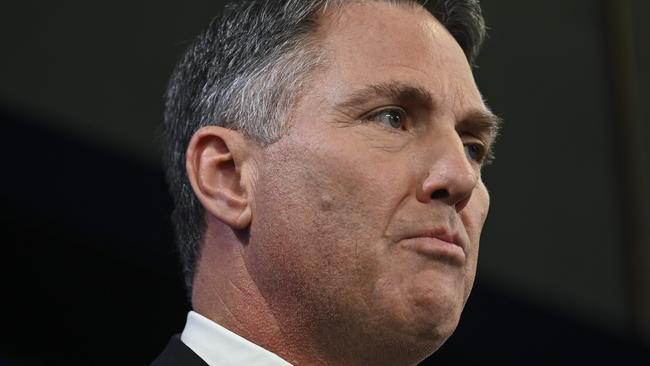It will take too long, but our new defence strategy sets us on the right course


The new strategy and the accompanying investment plan unveiled by the Albanese government has both strengths and weaknesses.
The glaring weakness is that almost no new capabilities are realised this decade – no new missiles, long-range strike capabilities, no increase in warships, and of course no new submarines.
This is a bipartisan failure of a lack of financial commitment and a lack of urgency on national security stretching from the previous Liberal government into the first two years of the current Labor government.
This neglect has been a shameful dereliction of responsibility given that China’s rise as the regional bully has been obvious for years now with its record spending on defence, its territorial claims and brinkmanship in the South China Sea, its buying off of Pacific Island leaders, and its efforts to punish Australia with trade sanctions.
But the new strategy document, which will be released every two years and which replaces the old ad hoc Defence White Papers, contains much that is sensible, so long as this and future governments fund it adequately.
Firstly, its analysis of the strategic environment is solid, making it very clear that China is a generational threat that requires Australia to forge ever-closer links with the US and Japan and do more to win the hearts of Pacific Island nations.
It promotes a so-called Strategy of Denial, which seeks to deter the enemy by creating a defence force powerful enough to “change a potential adversary’s belief that it could achieve its ambitions with military force at an acceptable cost”.
In short, this requires a defence force with long-range strike capabilities through land-based missiles, submarines, drones, warships and strike fighters able to hit an enemy in Australia’s northern approaches long before they get near the mainland.
This move to a pointier defence force with more firepower was flagged in last year’s Defence Strategic Review and the documents released on Wednesday explain how much force will be achieved.
The first and most important promise is more money.
The government says it will spend an additional $50bn over the next decade and $5.7bn over the forward estimates to create a new-look, more powerful defence force.
Over the decade, this will lift defence spending as a proportion of GDP from just over 2 per cent to 2.4 per cent.
Will this be enough to appropriately fund such a huge shopping list, especially a raft of new warships and the early stages of the nuclear submarine project? Probably not, but at least it’s a start and it’s a sign that this government, after a terrible first two years of doing nothing on defence, is committed to lifting its game.
The shopping list of new purchases – from land-based missiles to badly needed armed drones, to an army remodelled for US Marines-style littoral operations, to an enlarged surface fleet – have all been flagged previously. But we now know what will be scrapped to help pay for them.
This includes plans for a fourth squadron of F-35 joint strike fighters, meaning the RAAF will have 72 fighters rather than 100. Two new navy support vessels will also not proceed and there will be fewer infantry fighting vehicles.
In a perfect world, a fourth squadron of F-35s would have been good but defence funding is not a bottomless pit and the government is right to prioritise other capabilities like missiles, drones and a beefed-up surface fleet and submarines.
The new strategy also rightly focuses on ways to solve what it dubs the “crisis” in defence force recruitment. The defence force is currently failing to meet even its current modest recruiting targets, much less the substantially larger numbers it will need to crew an expanded surface ship fleet and the new nuclear-powered submarines.
The move to widen eligibility for recruits to include non-Australian citizens is long-overdue but the key will be to simply pay would-be recruits tonnes more money and then pay more again to retain them. Money is the most effective long-term solution to keeping people in service.
The government’s ability to carry out its defence strategy and multibillion-dollar investment plan depends ultimately on political will. Australian history is littered with governments that promise the world on defence plans and funding only to deliver very little.
This government has now made its promises. Let’s hope that it keeps them.



Australia’s new National Defence Strategy nails the growing strategic threat posed by China but concedes that it will take a decade, even with increased funding, to create the sort of defence force needed to respond to a bullying Beijing.